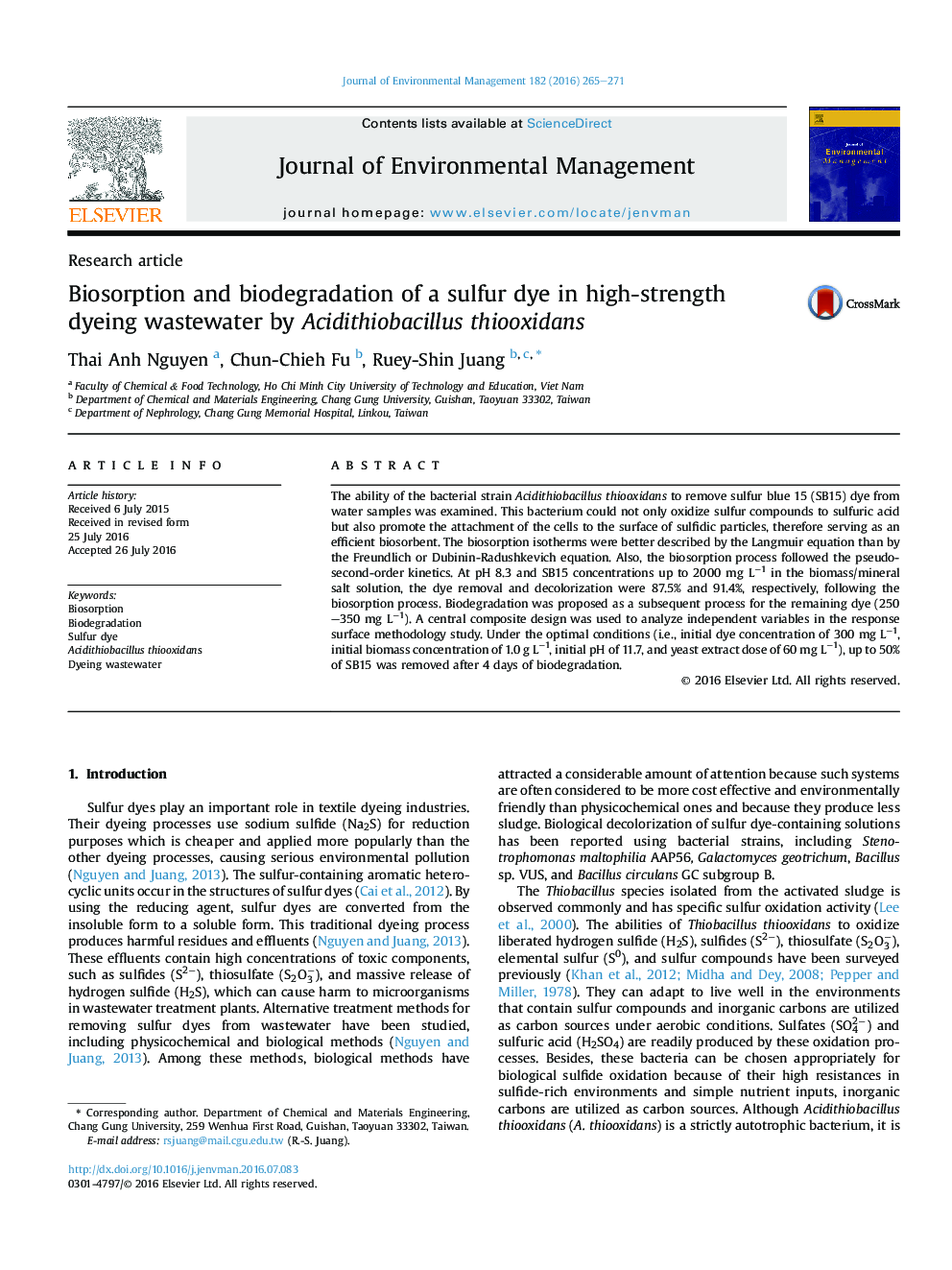| Article ID | Journal | Published Year | Pages | File Type |
|---|---|---|---|---|
| 7479053 | Journal of Environmental Management | 2016 | 7 Pages |
Abstract
The ability of the bacterial strain Acidithiobacillus thiooxidans to remove sulfur blue 15 (SB15) dye from water samples was examined. This bacterium could not only oxidize sulfur compounds to sulfuric acid but also promote the attachment of the cells to the surface of sulfidic particles, therefore serving as an efficient biosorbent. The biosorption isotherms were better described by the Langmuir equation than by the Freundlich or Dubinin-Radushkevich equation. Also, the biosorption process followed the pseudo-second-order kinetics. At pH 8.3 and SB15 concentrations up to 2000 mg Lâ1 in the biomass/mineral salt solution, the dye removal and decolorization were 87.5% and 91.4%, respectively, following the biosorption process. Biodegradation was proposed as a subsequent process for the remaining dye (250-350 mg Lâ1). A central composite design was used to analyze independent variables in the response surface methodology study. Under the optimal conditions (i.e., initial dye concentration of 300 mg Lâ1, initial biomass concentration of 1.0 g Lâ1, initial pH of 11.7, and yeast extract dose of 60 mg Lâ1), up to 50% of SB15 was removed after 4 days of biodegradation.
Related Topics
Physical Sciences and Engineering
Energy
Renewable Energy, Sustainability and the Environment
Authors
Thai Anh Nguyen, Chun-Chieh Fu, Ruey-Shin Juang,
